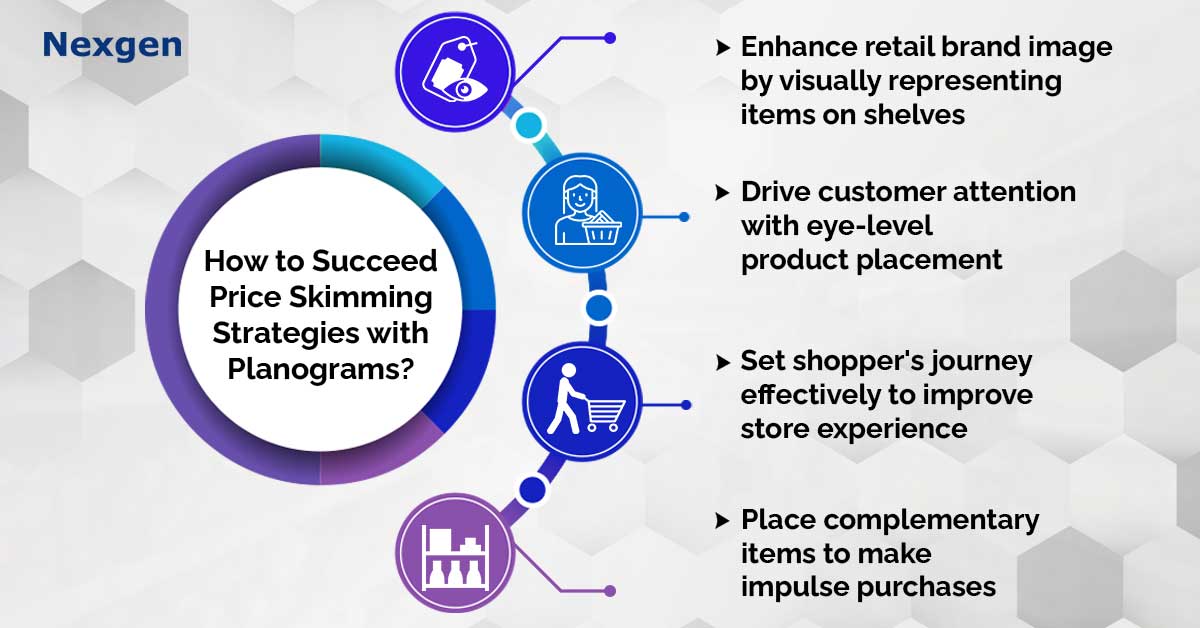When done right, new product placement can be a big toss for winning your shopper’s heart. And a big part of its success is product pricing. If you fix the price right and visually represent the item well on store shelves, it can drive sales and enhance your retail brand image. That is why you need to be strategic while choosing a pricing strategy like price skimming.
What is a Price Skimming Strategy?
It is a retail strategy used to price new products high before reducing the price over the period. This helps to generate profit for the first time while introducing the product in the shortest period possible. For example, most electronic brands offer high prices when first introducing their products, and there is a rush to purchase them. Shoppers are prepared to pay higher prices at first, but eventually, when the demand declines, many brands are forced to reduce their prices to satisfy customer demand. But the question is how to efficiently succeed in price skimming strategies in your retail store? It is said that the price does not make the shopping enticing, the visual representation of items matters. It can be done right with planogram software. Planograms are visual merchandising tools, which help to increase your retail cash flow by efficiently executing new products on store shelves. So, the following are some planogram ideas to succeed in price skimming strategies for your store sales:

- Eye-level placement: Products that are positioned at eye-level tend to receive the most attention from the shoppers. For instance, new cosmetics products can be placed at eye level, while the store’s existing products can be placed on the lower shelves to make the product more visible to the audience. The new products can be spread throughout the store in a Z pattern, where shoppers tend to gaze at such items impulsively. The location of products on an isle is also important. It is true that items placed at the start of an aisle do not sell well. It is believed that customers need time to be comfortable in the aisle, so they take more time to decide what to buy. That is why it is better to place new items in the middle of the aisle where the product is more visible to the customer.
- Set the shopper journey effectively: It describes a shopper’s path from the moment your brand’s new item enters their awareness throughout the store experience. Rebuilding displays and a slight change in store layout can result in slowing down the shoppers. Place new items at the window displays, or with other high-value items, in the first 5 to 15 feet of space to entice shoppers. Also, if the items are small, placing them on checkout counters will increase the chances of impulse buying, where they must try such items first.
- Placing complementary items together: Planograms in retail stores can be used to put complementary items together. For example, if you have a new brand of beer, you can simply put chips near the beer to make impulse purchases. Also, put discount labels on chips along with the new beer, to make people believe in buying both items together. Most people prefer low price items rather than high value prices, but when retailers offer discounts for the existing items, people will unconsciously purchase two items together. This results in more sales and helps to reduce the excess stock on shelves.
Overview of Nexgen POG
Nexgen POG is a robust and user-friendly cloud-based visual merchandising tool. It is designed for quick and efficient planogramming with minimal effort. Planograms can be designed by easily dragging and dropping the products. The multi-device compatibility feature of POG allows you to obtain, share and edit planograms on any device, including your phone. It helps in designing store-specific planograms for increased product visibility and sales.
Get Your Free Trial Now!